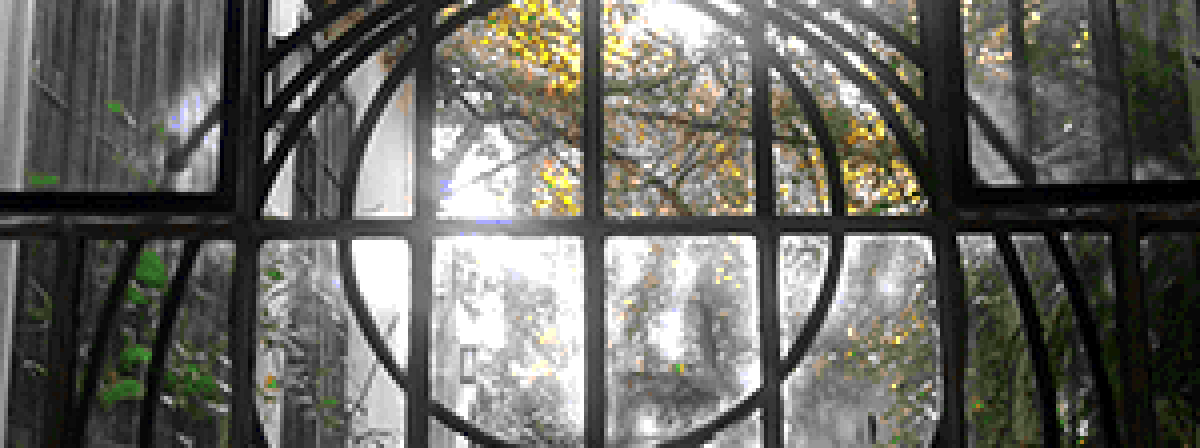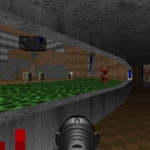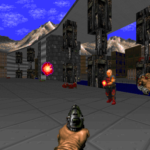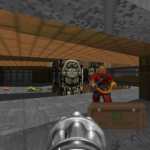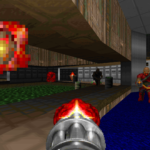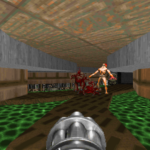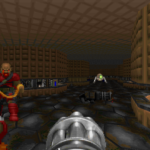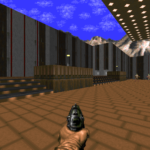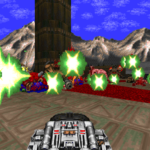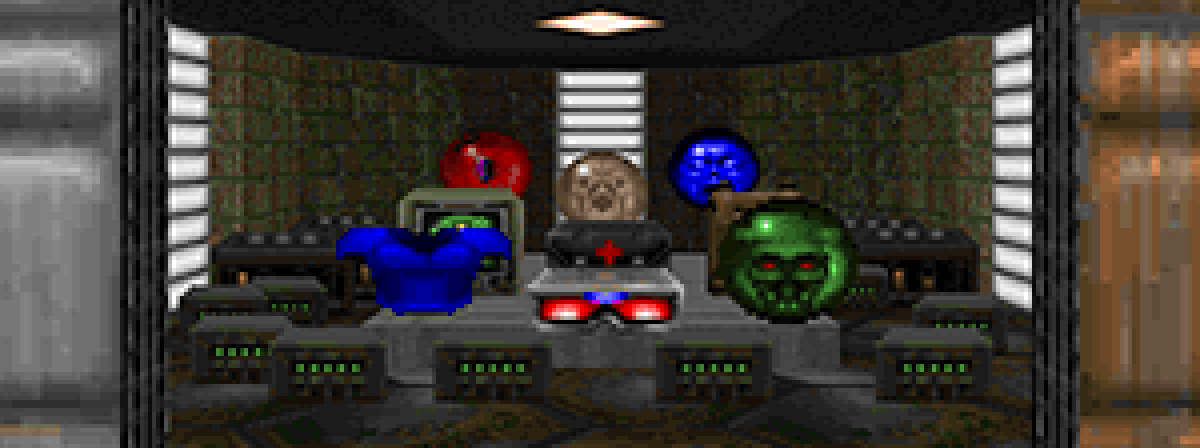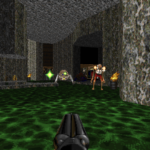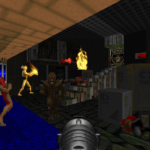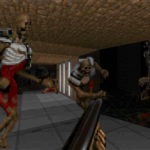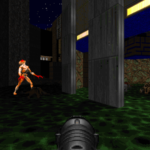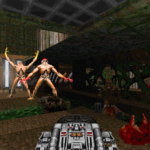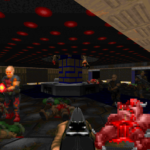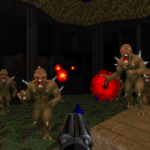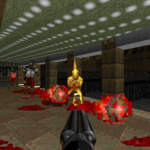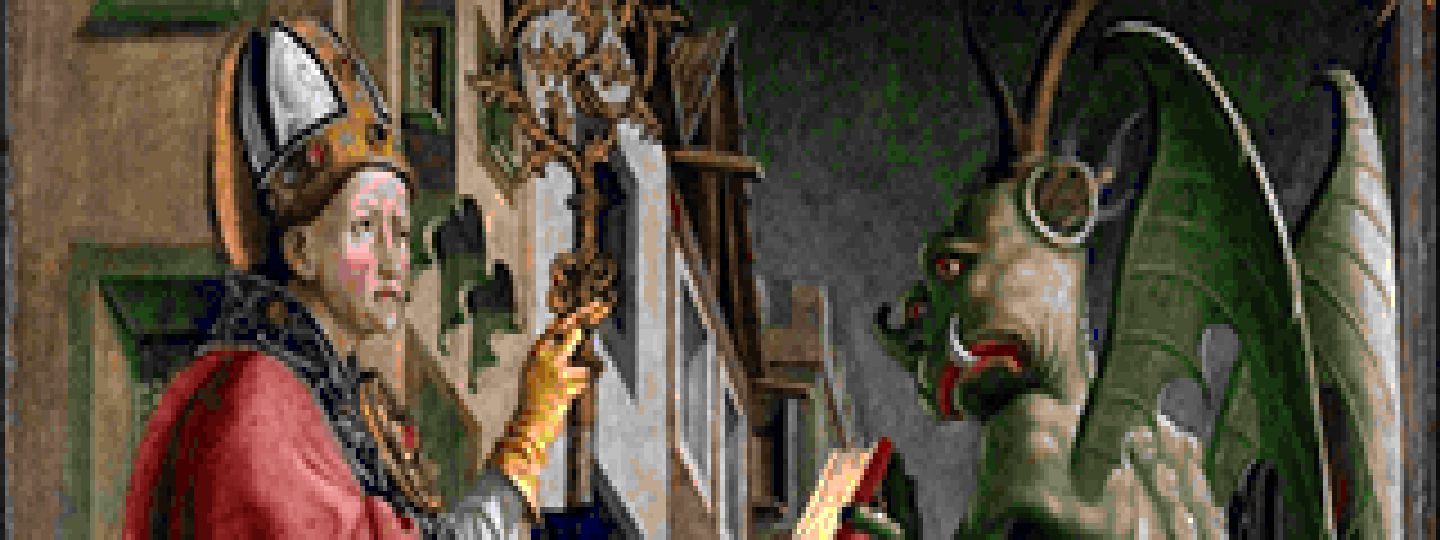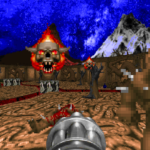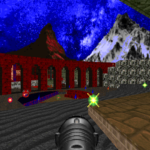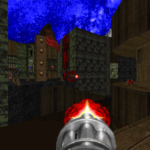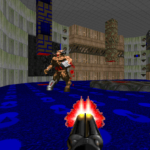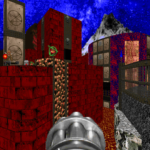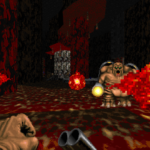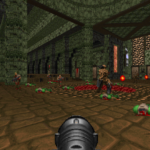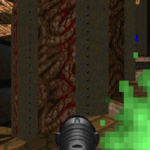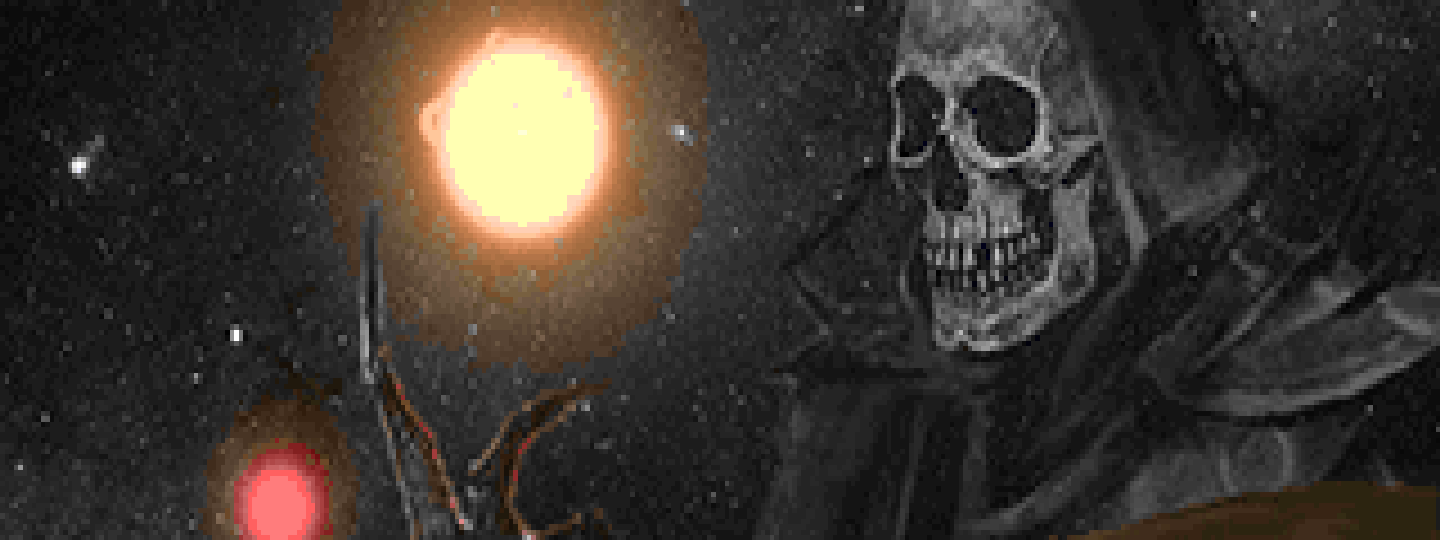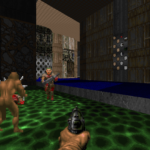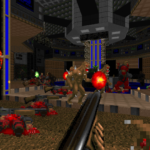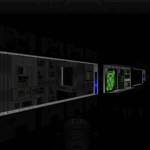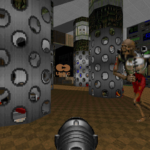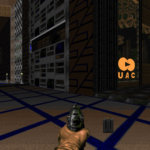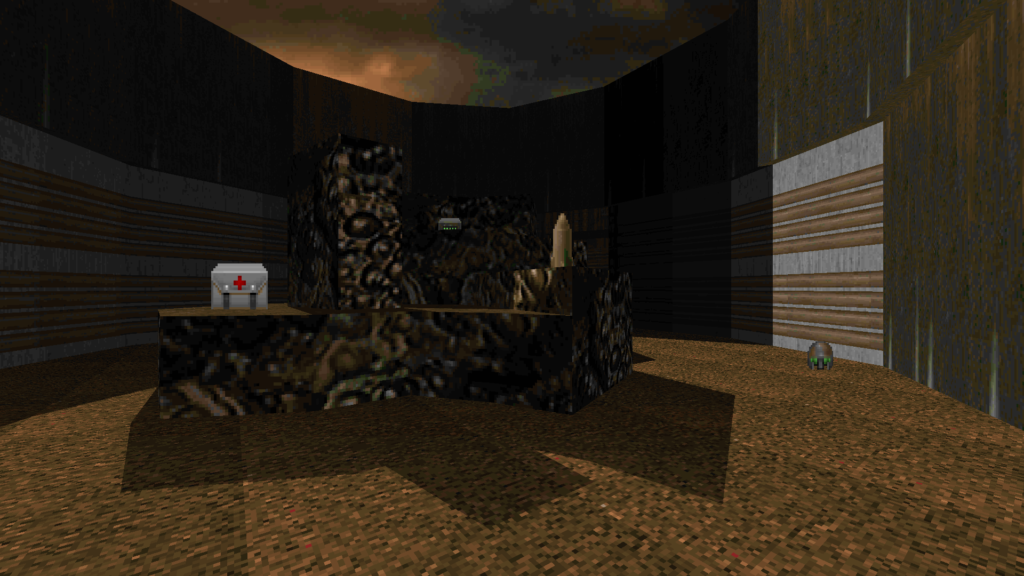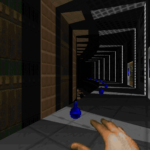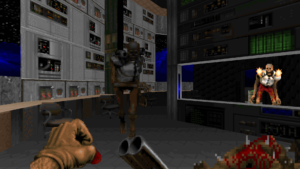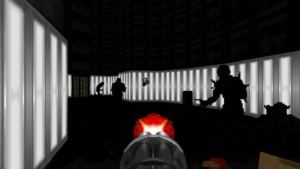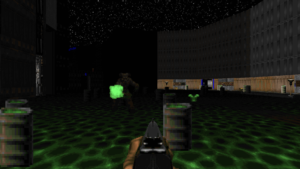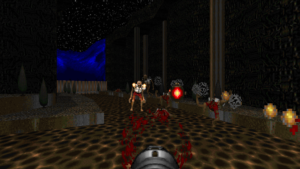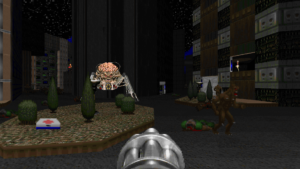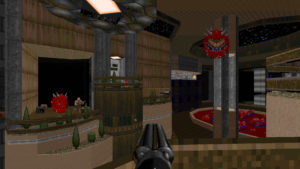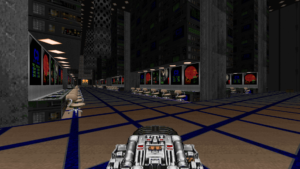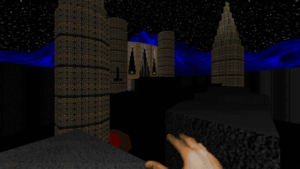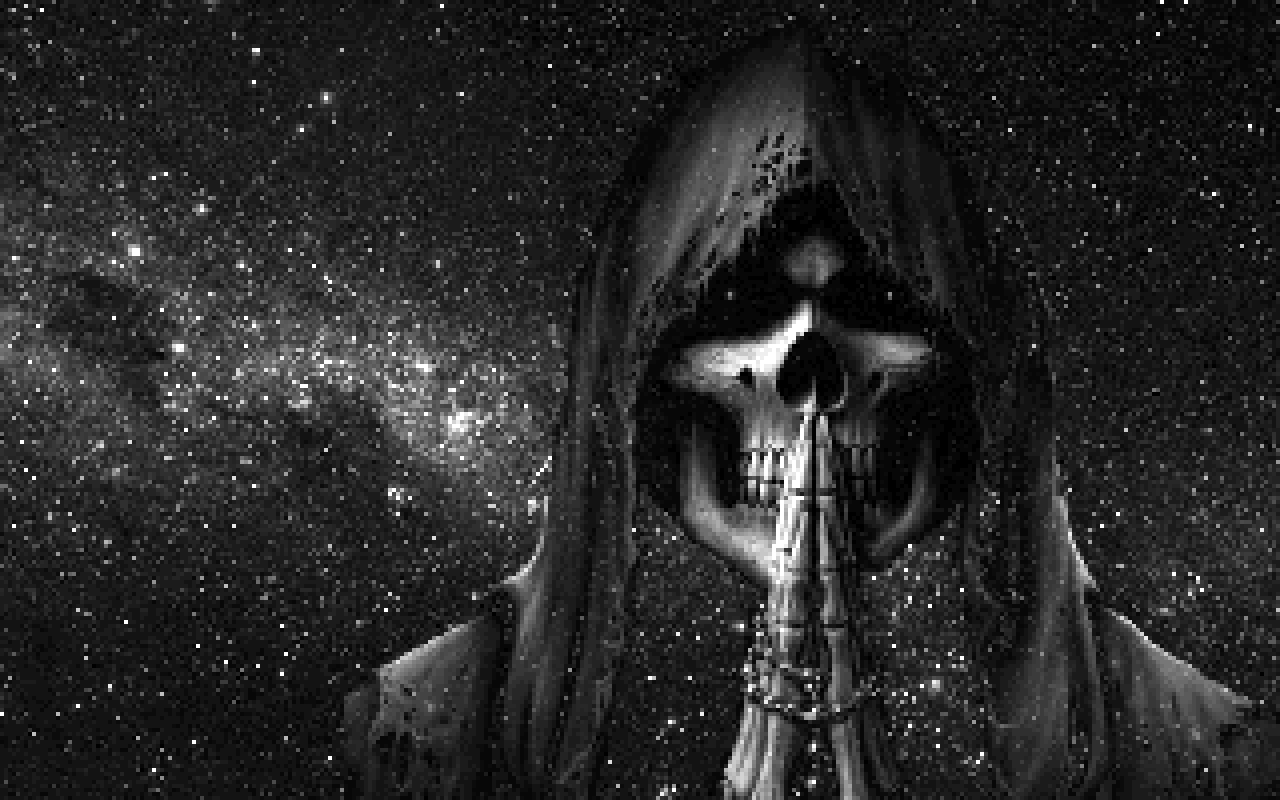
You knew this was coming. How could I ever, ever end this column without taking a look at what Nicolás Monti has been up to lately?
Some time in 2018 was the point where I started paying a lot less attention to Doom WAD releases. That was coincidentally around the same time Monti was taking a break from Doom. Even still, in the time since my review of Mano Laikas: A road to Gamzatti in 2017, our benevolent mapmaker has graced us with no less than ten new WADs. I’ve caught up on most of those and now I have the opportunity to spotlight some of my favorites here for you.
If you’ve not played a Monti map before, one thing you oughta know going in is that they’re a little unconventional — and that’s me saying that. His texturing is an acquired taste for sure, the environments are uniquely surreal, and the way spaces are interwoven sets the maps totally apart from anything else I’ve seen in our modern mapping scene. To me, even Monti’s worst WAD stands head and shoulders above almost all the competition, and I sometimes suspect he has made some sort of occult deal wherein he sold his soul in exchange for peerless mapping speed and prowess.
With 28 years of Doom mapping preceding the work we do today as mappers, there’s a certain visual rule book that has been codified at this point — whether we realize it or not. The rules aren’t exactly unwritten (in fact, I’ve seen them written more times than I could count), but never to my knowledge have they all been compiled and listed out in any one place. You see some of those rules suggested as part of the feedback to a newcomer’s first map thread on Doomworld. You see some of them offered up in response to mappers asking how they can make their maps “better,” or how they can add that layer of visual polish that will Get Them Noticed. Nicolás Monti has made a very conscious choice to throw that visual rule book into the wood chipper, and I have boundless admiration and respect for him because of it.
Ultimately, you may not like Monti’s maps as much as I do. In fact, you might not like them at all. But if my opinion holds any weight for you, let me tell you that you must give them a shot and find out.
Witness of Time
If you’re looking for something close to the experience of Alpha Episode 1 and 2, Witness of Time is where you begin. You’ll find Monti drawing from the same bag of tricks here: the sprawling techbases of unfeeling gray and browns, splashed here and there with vivid blue circuitry and green nukage; the midified ’80s pop tunes; the horribly-tiled GRAYTALL. Even the inclusion of the SSG and Doom II monsters doesn’t feel as out of place in an alpha-themed episode as you might expect.
When I set out to compile this list of some of Monti’s best work, Witness was the one that leapt out to me first, probably for obvious reasons. Now having played a much wider breadth of his offerings, I reflect on Witness as actually being a bit quaint. It’s a fantastic bridge from the familiar Alpha Episodes to the more recent chapter of Monti’s oeuvre, but it may be only that. The mapper still has a lot of room to grow, especially when it comes to crafting combat encounters — though that’s something we won’t have to wait long to see. What we have in Witness of Time is undoubtedly the best that this alpha style has ever looked, but if you don’t already have a deep love of Monti’s alpha sets, I imagine Witness probably doesn’t offer anything to elevate it much beyond those earlier WADs. For me, though, it’s the culmination of everything I loved about Monti when I first discovered him.
By the way, that shtick in the final maps of Alpha Episode 1 and 2 where you spend an inordinate amount of the level with absolutely no combat, gathering resources and building up to the climactic fight? I can confirm that it’s still shockingly effective at building atmosphere even the third time around.
60 Secrets
The moment I start describing 60 Secrets, it will come as absolutely no surprise to anyone who knows me why I love this one. Imagine a mapset that feels like it was speedmapped (but wasn’t)… one that uses space as economically as a linedef limitation project (but isn’t one)… and has a slaughter per square foot ratio simply bursting off the charts. You are now imagining 60 Secrets.
This is the beginning of what I would consider a new phase of Monti’s career, defined by gruesome traps and frenetic combat the likes of which he merely flirted with in the past. There were times in the Alpha Episodes that traps were sprung on you with so little space to move and so little time to react, they were virtually impossible to survive on a first playthrough. In Mano Laikas I felt that the heavy emphasis on arch-viles leaned toward being a crutch. But here, Monti achieves a perfect equilibrium. A sort of Doom combat balance that only the philosophers have dared to dream could exist.
Most fights in 60 Secrets had me hanging on by my fingernails and wondering with every free brain cell how I even managed to survive this long. And when I say those encounters are creative, I say that with the understanding that it’s an understatement of cosmic proportions. The third map in particular, Death Finds a Way, is a monumental achievement in cramped, almost comically-dense monster closetry. That map alone gave me more than one good chuckle and out-loud exclamation of “Are you kidding me, Monti?”
In my humble opinion, you would truly be hard-pressed to find much more inventive maps using stock resources in the entire history of Doom WADs. I already knew Monti was a master at giving the alpha textures new life, but if anything he may be even more skilled with these Doom II textures. If I could recommend only one WAD to someone unfamiliar with this mapper’s work, it would be 60 Secrets. A short, beautiful journey — and an utter delight.
Ater Fieri
Essentially the answer to the question “What if Nicolás Monti did E3?” — except Ater Fieri is for Doom II. Monti finally gets to use a ton of textures I personally haven’t seen him work with before, including all the Hellish bricks and brimstone, flesh and flames that show up in Doom’s third episode. I’ve read a comment of his saying he didn’t particularly enjoy using them, but for somebody who doesn’t care for these textures he’s done an extraordinary job adapting them to his style.
It’s not all Biblical Hell all the time, though. Monti can’t help falling back to his techbase ways pretty frequently, mixing a fair amount of Deimos into this Inferno. Most notable is the very late E2-esque map05, Telesto Lab, a riveting map-long teleporter puzzle.
Other maps were made years prior to the project coming together, including a final map originally created all the way back in 2012. The whole WAD feels much less cohesive than other Monti projects, but oddly enough the older maps aren’t the ones responsible for bringing down the experience. Rather, it’s some truly ludicrous difficulty spikes in map04 and 07 that make it hard to wholeheartedly recommend Ater Fieri. Both involve hard-to-see hitscan snipers, painfully finicky strafe-jumping, and a general lack of clear direction — all suspended over a maze of lava that you must dip into at least a couple times.
Still, the mapset is more than worth checking out… even if you’ve got to cheat your way through map07. I admit I did.
Alpha Centauri
Witness of Time was perhaps the pinnacle of Monti’s original alpha aesthetic, but Alpha Centauri marks a shift into a new alpha aesthetic. This time it’s a bit — a bit — less abstract, starting to lean into that so-called “Doom-style realism.” Certainly realism doesn’t correlate directly with quality, especially in Doom, but here it does add a vague sense of verisimilitude that I think works off of Monti’s style in an interesting way. When bits of reality creep into a Monti map, they put the surreal into even sharper focus.
All that said, it’s really the use of light that most defines this mapset. What you’ll notice from minute one is a hyperfocus on the sources of the light and the things that would logically obstruct it. It isn’t enough anymore for Monti to cut a skylight into the ceiling and render the floor directly underneath it brighter than the surrounding room. Instead he draws that sunlight spilling in at an angle, maybe illuminating a wall or two on the way. He places pillars and crates where they’ll cast meticulously-detailed shadows. He crafts his scenes in such a way that the light or the darkness creeps only partway up a surface — which if you’ve ever mapped for Doom, you know requires a bit of trickery even to accomplish. And all this is done dozens of times per map.
It’s not just the visual spit and polish; every aspect of Monti’s mapping ability is firing on all cylinders in this one. The layouts of these bases are possibly the most interesting I’ve played from his catalogue. Combat is nearly at the level of 60 Secrets, both the incidental stuff and the fiendish traps. Even a bit of Ater Fieri’s platforming elements are carried over but drastically improved. Leaping from ledge to ledge provides some cute interludes between fights, but more importantly allows the maps to be even more interconnected than before — since you can traverse an area both on the ground floor or while doing acrobatics in the rafters.
Does Alpha Centauri usurp Apostasy on Amalthea as my favorite Monti WAD? That’s a harder question than you could imagine. There’s such a beautiful simplicity to Apostasy on Amalthea that makes it instantly and effortlessly lovable, and every midi choice either puts a dumb grin on my face or goosebumps up and down my arms. Compare that to the music in Alpha Centauri, which ranges from phenomenal to downright annoying. And maybe it’s petty, but I also seriously object to the long, multi-step switch hunts required to exit every “lock-in” type arena fight, like Monti watched one too many players escaping his carefully crafted fights and decided he had to come up with this really heavy-handed solution that just wastes your time.
So has Apostasy on Amalthea been dethroned? Not yet, but it was a damn close call.
Cyberpunx
Another thing Monti has experimented with in the last couple years is monster edits, and I’ve not been as keen on those as I have his other developments. The clashing sprites of Back to 1994 are very obviously intended to be silly, but it’s not the kind of Doom humor I find endearing over the course of an entire episode. Enceladus used DeHackEd to modify the attributes of the default enemy roster, and while axing a significant portion of the cacodemon and baron’s HP is a welcome change, pumping both zombie types up to about the toughness of an imp most certainly is not.
Cyberpunx bucks that trend by increasing the movement speed of many common enemies but not touching their HP, i.e., making them more dangerous without turning anything into a frustrating damage sponge. Cyberpunx continues Alpha Centauri’s obsession with lighting as well, this time plunging the levels into darkness. Brightly-lit sectors are a precious commodity in this WAD: a safe haven when the ubiquitous darkness sometimes poses just as much of a danger as the sped-up demons.
This is another alpha-themed affair, but I can say without any hesitation that it’s the best these textures have ever looked. Cityscapes, techno-forests, and lunar mining operations — there’s a ton of new aesthetic ground covered even while limited to the same textures we’ve been seeing in Monti’s projects for years. The moody lighting takes them to another level too, and new graphics replace almost all the props and pickups to bring the mapset into a realm where you could sort of believe this is an equally awesome Doom that got released in some alternate reality.
Cyberpunx is a masterclass in Doom map design from a master Doom designer. I’d say the combat maybe isn’t as tight as in previous Monti WADs, possibly because the faster monsters are harder to account for when setting the encounters up. Who knows. Still, Cyberpunx remains one of the strongest mapsets on this list. Just don’t try to stand toe to toe with those souped-up spider masterminds and cyberdemon; I said the common enemies didn’t have their HP buffed, but some of the bosses sure as heck did. You may have better luck than me, but I’m legitimately incapable of defeating the cyberdemon guarding the exit of the final map… at least not without the doubled ammo afforded on I’m Too Young to Die.
And there we are: up to date with Nicolás Monti’s most recent WAD. Though we’re not quite done yet. There’s one more WAD I want to talk about — but it deserves its own separate review. So I’ll see you then!
Witness of Time, 60 Secrets, Ater Fieri, Alpha Centauri, and Cyberpunx all require DOOM2.WAD and run on limit-removing sourceports. If you’re not sure how to get them running, this may help. And for more awesome WADs, be sure to check these out!
